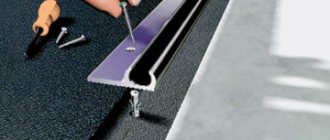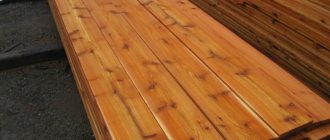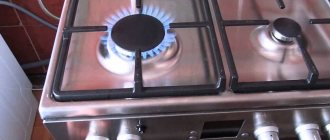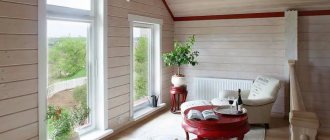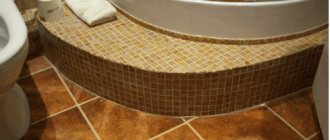Of all floor coverings, parquet has earned special love. This natural material has extraordinary beauty and noble appearance. Through many years of testing, it has proven such qualities as reliability and durability. But years pass, and even with decent care and careful treatment, the time comes to repair the old parquet, or the parquet in the apartment will have to be completely replaced.
You can entrust this work to specialists, or do everything yourself, and also save money. How to dismantle the old coating on your own, and in what cases it is possible to return it to its original beauty and external luster - we’ll talk about this in this article.
Replacing parquet in an apartment or repairing it
If the old parquet floor is very worn out or the coating has dried out, and quite impressive gaps have appeared, the parquet flooring in the apartment needs to be replaced. If the parquet flooring is wet and swollen, or the planks have a large number of cracks and chips, the parquet flooring also needs to be replaced.
Replacement of flooring can be partial or complete:
- Partial
- only the old finished floor is dismantled. As for the subfloor in the form of cement screed, wooden joists, etc., it is left, repaired if necessary. After dismantling the old parquet, the base must be thoroughly cleaned, removing debris and dirt, repaired and primed before laying a new covering. - A complete replacement
is necessary when the base is unsuitable for further use: the screed has numerous chips and large cracks, or it is crumbling, or the joists have rotted. This replacement option is much more expensive than replacing only the finished floor without dismantling the base.
If you have to complete a complete floor replacement on your own, keep in mind that you need to complete several technological steps:
- Remove old flooring.
- Disassemble the worn subfloor. This is either a screed or joists.
- Clear debris and repair base. The concrete base is primed if necessary.
- A new screed is poured and time is given for it to dry.
- For better leveling, the surface of the screed is sanded.
- A new flooring material, selected in advance, is laid.
- Skirting boards are being installed.
It is possible to tell in more detail what stages of work you will perform when completely replacing the floor yourself, only when determining the specific type of finishing material for the floor.
If the parquet is slightly worn, but there are scratches, cracks, or creaks in the floor, it is possible to limit yourself to repairs
without dismantling the entire coating.
In some cases, it is necessary to restore
the old parquet to give it its original appearance.
There are other reasons for replacing parquet flooring when it is in good condition, but the residents wanted to completely change the interior of the room, including the parquet flooring. In such a situation, you must try to carefully dismantle the expensive covering and lay it in another room.
When and how to do selective parquet repairs
When a parquet floor is used for a long time, some planks dry out and pop out of the coating.
In such a situation, there is no need to dismantle the coating and then replace it; it is enough to repair the old parquet. To this end, certain specific actions must be taken:
- Completely remove the layer of old varnish to reveal all loose, unsecured elements.
- Dried planks, with gaps of more than 5 mm formed between them, must be removed and replaced with new ones. If the bar resists and cannot be pulled out, you can use a chisel to split it into small pieces and then pull it out.
- To insert a new plank into the vacant space, its protrusion - a tenon - is cut off. A layer of glue is applied to the base, then a new plank must be inserted at an angle so that its groove fits onto the tenon of the adjacent plank.
- Places of local repair are pressed down with a heavy load and left overnight.
- After selective repairs, the parquet surface is sanded and coated with a layer of varnish.
Priming and varnishing - the final stage
The choice of varnish depends on the desired effect. Glossy will emphasize the beauty of the design, matte will mute the intensity. Before opening the area with varnish, the surface is vacuumed and a primer is applied. This way, the varnish will lie flat. It is applied in several layers - from 3 to 9. Each layer is allowed to absorb for a day.
The varnish is left to dry in absolute calm - you cannot open windows, doors, or turn on ventilation.
Replacing one parquet board
There is a situation when one or two parquet boards are damaged, while all the other boards are intact and in excellent condition. Why not change the entire coating because of this? Is there any easier option?
If the boards of this covering have interlocking connections, then this is the most solvable situation. To fix it, you will need to disassemble the flooring before damage and replace the parquet boards.
With the adhesive installation method, when the board was glued to the base, there is a correction option, but it is more difficult to do.
Step-by-step instruction
- First, mark the board with the defect: outline its boundaries so as not to catch adjacent boards when cutting.
- Next, the board to be replaced should be divided into small parts, this will make it easier to remove. To do this, cuts are made across the entire thickness of the board along a rectangle located parallel to the perimeter of the board, but spaced about 5-6 centimeters from its edges.
- Then the removal of the board begins; you can use a chisel for this.
- After removing the central part of the board, its remains can be easily removed.
- The removal process is carried out carefully, trying not to damage adjacent boards and preserve their locking elements.
- Then you need to prepare the adjacent boards for applying the adhesive layer. To do this, use a knife to clean the joining lines of these planks and remove debris from the surface.
- Next, you should prepare a replacement board, cut off the lower protruding part of the tongue (lock joint) on it evenly - the new plank should fit into the empty rectangle.
- You need to clean the base before applying glue.
- A new board is glued. If previously the old board was mounted using the glue method, then first a layer of glue is applied to the surface of the base, then to the side of the new plank. If the covering is laid using the floating method, the glue is applied only to the sides of the plank. The board is carefully inserted, starting from the long part with the groove, tamping with a block so that the ends meet. The protruding glue must be removed before it dries.
- Press down the gluing area with something heavy until the glue is completely dry.
Laying laminate flooring
Laminate flooring on a base in the form of a parquet board can be laid in several ways.
Installation stages
A properly prepared surface allows you to quickly install the lamellas in accordance with the following instructions:
- Place any damping underlay on the parquet surface. When using a rolled backing, an overlap of twenty centimeters must be observed.
- Install special wooden spacer wedges around the perimeter of the walls, which will serve as a kind of temperature compensator. This gap should be about fifteen millimeters.
- The location of the joining lines of laminated panels should be carried out in a direction perpendicular to the window openings, which will make the joints almost invisible.
- Laying should begin with a more visible wall, which will be less crowded with furniture than others. This allows the trimmed panels to be used in a less visible part of the room.
- The second row of lamellas is mounted offset relative to the first by thirty-five percent in length.
To knock the elements together, use a rubber hammer. The slats with the locking system are joined in the horizontal direction. Click panels are fixed by snapping. The use of adhesive laminate involves the use of an adhesive composition.
The use of a substrate can significantly improve the thermal insulation of the floor, as well as make the laminate flooring more silent during operation.
Preparatory work
Before starting work, all furniture and other items must be removed from the premises. You should take safety precautions: you should prepare a set of thick clothing, gloves and a piece of headwear in advance. If electrical wires are laid in the floor or baseboard area, the room should be de-energized.
You need to prepare the necessary tools in advance:
- hammer;
- small axe;
- chisel;
- circular saw;
- mount.
How difficult the dismantling will be is determined by the type of parquet and the method of its fastening (using nails or glue).
Dismantling without saving dies
In this case, there is no need to worry about the safety of the elements, so you can dismantle them with any convenient tool, such as a chisel, chisel, hammer, crowbar, nail puller, or hand-held circular saw. The only thing you should take care of is the safety of the substrate.
Whenever dismantling parquet, you must follow safety precautions and wear safety glasses and gloves.
Fragment of the dismantled floor
Removing old parquet flooring
If the parquet floor consists of piece strips glued to the subfloor, careful removal is impossible. In this case, the boards will become completely unusable, because, most likely, they will crumble when removed. Modular parquet and parquet boards are much easier to disassemble.
Removing block parquet floors
Consists of the following steps:
- Using a pry bar, the baseboards are removed.
- The surface of the parquet floor is tapped with a hammer, a place with a duller sound is determined, and dismantling of the parquet begins from this place.
- If the planks are attached with nails, they begin to work using a nail puller, and if they were glued to the base, they pick up a hatchet and a pry bar.
- Parquet flooring that is too tightly glued can be removed using a hammer drill and a flat attachment. In this case, you must wear glasses to protect and safety your eyes from unexpected impacts from wood fragments.
Removing parquet boards
The parquet board is laid in a way very similar to laying a laminated floor. Parquet parts are connected using locking elements, so dismantling a parquet board involves disconnecting the fastening elements - with caution.
If the coating is in good condition
, then after disassembling it can be re-laid in another room - damage, as a rule, does not occur during dismantling. When disassembling, all boards must be numbered to simplify subsequent installation.
Dismantling modular parquet
Modular (panel) parquet flooring can be dismantled without much difficulty or effort. Laying such a covering is usually carried out from the window to the door, so dismantling begins in the reverse order: from the wall located opposite the window.
Many people ask the question: how to remove old parquet flooring when fixed with resin? In this case, the lower surface of the module should be carefully removed from the glue, using a small hatchet.
Once the floor removal is complete, a new floor covering will be installed. What type of coverage you choose is your decision. If you have to replace the old parquet in your apartment with a new one:
Read about laying parquet flooring yourself in the article: Laying parquet boards yourself
If you have to replace the parquet flooring in your apartment with laminated flooring:
About laying laminate flooring yourself is described in the article: Laying laminate flooring with a backing
We wish you success!
Dismantling parquet while preserving the tiles
In order to preserve as many dies as possible during dismantling, you need to carefully tap each one with a wooden hammer (mallet). This will cause some of the dies to move away from the base.
If the parquet was attached to the floor with glue, it will not be possible to save some of the tiles. Dismantling should begin from the wall opposite the window. The first die is removed using a chisel or chisel driven into the joints. All other dies are carefully removed from the floor using a crowbar, a wide chisel and a hammer. Of course, some dies will burst, and the first one will probably fail, so for re-installation you will probably have to buy additional elements.
If the parquet was fastened with nails, you can try to remove them using a small nail puller. If you first tap the dies with a mallet, the nails may rise slightly above the surface. It is quite possible that the varnish coating will be scratched, so in the future you will have to scrape and varnish the laid elements.
It is always better to save the tiles, since this is a ready-made material for re-installing the floor
